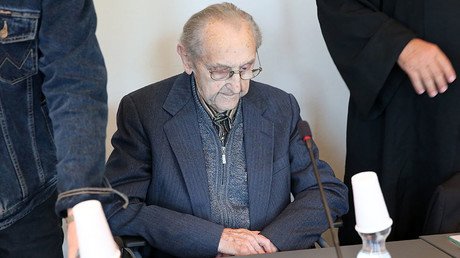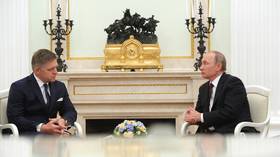Germans build virtual-reality death camp to help prosecute Nazi criminals

German law enforcement has created a virtual model of the Auschwitz concentration camp to help prosecute the few remaining suspected accomplices in the mass killings committed there by the Nazi regime.
The team headed by Bavarian State Criminal Investigation Office (LKA) digital imaging expert Ralf Breker used blueprints from Auschwitz archives, over a thousand period photos, and laser landscape scans he made at the site in 2013 to develop a precise virtual model of the death camp. The model can be toured with a VR headset.
The goal is to help prosecute Auschwitz staff for complicity in the atrocities committed there. In the past, some suspects claimed that they were not aware of the mass killings at the camp, and the model helps put such claims to scrutiny.
“Legally, the question is about intent: must a suspect have known that people were being taken to the gas chambers or shot? This model is a very good and very modern tool for the investigation because it can help answer that question,” Jens Rommel, head of the federal office investigating Nazi war crimes, told AFP.
The model is detailed down to individual trees and how they obstructed the view from different parts of the camp.
“The advantage the model offers is that I get a better overview of the camp and can recreate the perspective of a suspect, for example in a watchtower,” Breker said.
A simpler version of the model was developed for the planned trial of Johann Breyer, who died aged 89 in the US in 2014 while awaiting extradition to Germany. The German authorities accused him of aiding in the murder of more than 200,000 Hungarian Jews at Auschwitz.
This year, a more advanced model helped prosecute former SS guard Reinhold Hanning, who was convicted in June of complicity in 170,000 murders and sentenced to five years’ imprisonment.
German authorities say the virtual Auschwitz may help with a “double-digit” number of suspects who are still alive today. After that the model may be lent to the Yad Vashem memorial in Israel.
Auschwitz concentration camp, one of several facilities operating under that name, was opened by Nazi Germany in Poland in 1941. More than 1.1 million people died there before the site was taken over by Soviet forces in 1945. Breker said the office should be careful about the handling of the model, since in the wrong hands it could be used inappropriately, for instance, to make a video game.













